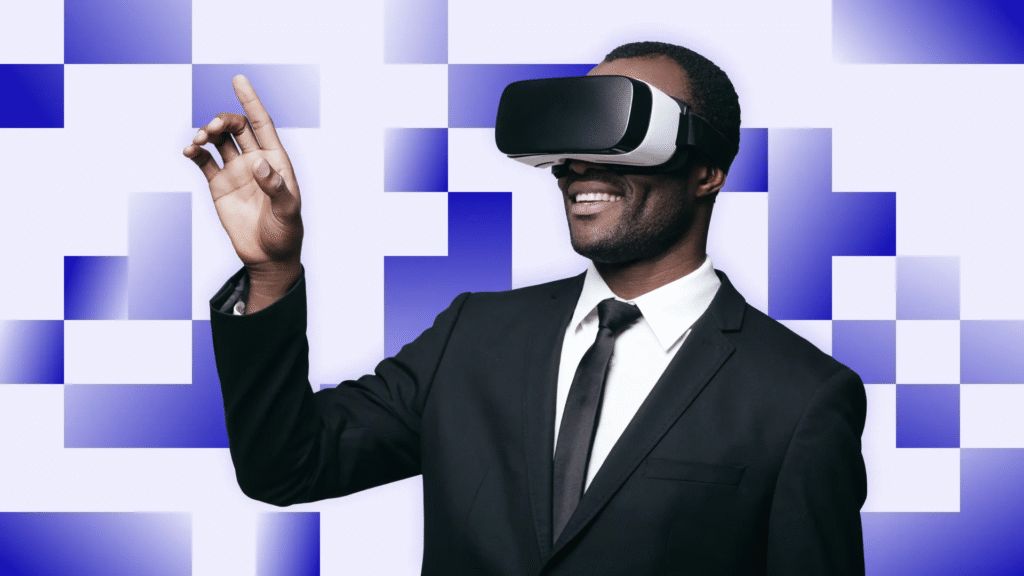
In today’s rapidly evolving business world, leadership development has become more crucial than ever. Organizations are seeking innovative ways to equip their leaders with the skills, confidence, and adaptability required to navigate complex challenges. One groundbreaking solution is virtual reality for leaders, an immersive training approach that leverages cutting-edge VR technology to simulate real-world scenarios. This form of training allows leaders to practice decision-making, communication, and conflict resolution in a realistic, risk-free environment. As businesses embrace digital transformation, virtual reality leadership training is emerging as a game-changer in the way organizations develop their future leaders.
What Is Virtual Reality Leadership Training?
Virtual reality leadership training combines advanced technology with proven leadership development methodologies to create highly immersive learning experiences. Through VR headsets and interactive simulations, participants are placed in lifelike situations where they can test their leadership skills under pressure. Whether it’s managing a team crisis, conducting performance reviews, or negotiating with clients, VR provides a safe yet realistic environment to practice essential skills. The concept of virtual reality for leaders focuses on experiential learning—teaching through doing rather than simply observing or reading. This hands-on approach helps bridge the gap between theory and real-world application, making training more effective and memorable.
Why Traditional Leadership Training Falls Short
Traditional leadership development programs often rely on classroom-based lectures, e-learning modules, or theoretical discussions. While valuable, these methods can lack the emotional intensity and realism of real-life leadership challenges. Leaders may understand concepts in theory but struggle to apply them effectively when faced with pressure or uncertainty. This is where virtual reality for leaders offers a revolutionary advantage. VR allows participants to experience authentic scenarios where they must make quick decisions, handle feedback, and adapt to dynamic situations. Instead of passively consuming information, learners engage in active problem-solving, reflection, and improvement—key components of effective leadership.
The Science Behind Immersive Learning
The effectiveness of VR leadership training lies in its ability to replicate the conditions of real-world experience. When learners engage in immersive environments, their brains process these experiences as if they were happening in real life. This psychological phenomenon, known as “presence,” enhances emotional engagement, retention, and behavior change. Studies have shown that immersive training leads to higher levels of skill transfer compared to traditional methods. For virtual reality for leaders, this means that executives and managers not only learn leadership concepts but also internalize them through direct experience. This makes VR training one of the most powerful tools for developing self-awareness, empathy, and resilience—qualities essential for successful leadership.
Key Benefits of Virtual Reality for Leaders
The benefits of virtual reality leadership training extend far beyond convenience and innovation. One of the main advantages is the ability to create realistic, high-stakes scenarios without any real-world consequences. Leaders can practice handling conflict, giving feedback, or leading change without risking employee morale or business outcomes. VR also provides instant feedback, allowing users to reflect on their decisions and improve continuously. Furthermore, VR training can be scaled across an organization, offering consistent, high-quality training experiences to leaders at all levels. By integrating virtual reality for leaders into professional development programs, companies can foster a culture of continuous learning, agility, and adaptability.
Real-World Applications in Leadership Development
Virtual reality leadership training is already being implemented by some of the world’s most forward-thinking organizations. Global companies use VR simulations to train leaders in communication, diversity and inclusion, emotional intelligence, and crisis management. For instance, a VR module might simulate a heated discussion between team members, challenging the leader to mediate effectively and maintain team cohesion. Another scenario might involve a performance review where leaders must provide constructive feedback while keeping employee engagement high. The versatility of virtual reality for leaders means it can be customized to match any industry or leadership style, from corporate executives to frontline supervisors.
Building Emotional Intelligence and Soft Skills
Leadership is as much about emotional intelligence as it is about strategic decision-making. VR training uniquely enhances empathy and self-awareness by placing leaders in situations where they experience different perspectives. For example, a VR simulation might allow a leader to see the world through the eyes of an employee receiving feedback or experiencing workplace bias. This fosters empathy, helping leaders develop more inclusive and compassionate management approaches. Using virtual reality for leaders also strengthens communication, listening, and conflict-resolution skills by providing real-time interactions that mimic human behavior. Over time, this type of immersive training leads to more emotionally intelligent and effective leaders.
Measuring Success Through Data and Analytics
One of the major strengths of virtual reality leadership training is its ability to provide measurable insights. Every interaction within a VR simulation can be tracked and analyzed, offering valuable data on decision-making patterns, communication style, and problem-solving abilities. Organizations can use these analytics to identify strengths and development areas for each leader. This data-driven approach makes virtual reality for leaders not only experiential but also evidence-based. Trainers and HR professionals can tailor future learning paths based on real performance metrics, ensuring each leader receives personalized growth opportunities that align with organizational goals.
The Future of Leadership Development
As technology continues to evolve, the role of VR in leadership training will only grow stronger. The combination of virtual reality, artificial intelligence (AI), and behavioral analytics is paving the way for smarter, more adaptive learning experiences. Future programs will feature AI-driven virtual mentors, real-time coaching, and hyper-personalized simulations tailored to each leader’s strengths and weaknesses. The future of virtual reality for leaders will focus on continuous skill development—creating agile, emotionally intelligent, and resilient leaders who can thrive in uncertainty. For organizations looking to stay ahead, investing in VR leadership training is not just an option but a strategic necessity.
Conclusion
Virtual reality leadership training represents a bold step forward in developing the leaders of tomorrow. It combines innovation, interactivity, and real-world relevance to deliver experiences that transform behavior and mindset. Through immersive simulations, leaders can practice essential skills such as communication, empathy, and decision-making in a safe, realistic setting. The use of virtual reality for leaders ensures consistent, measurable, and scalable learning outcomes that go beyond traditional training methods. As organizations continue to embrace digital transformation, VR will play an essential role in shaping future-ready leaders—those who can inspire, adapt, and succeed in an ever-changing world.
